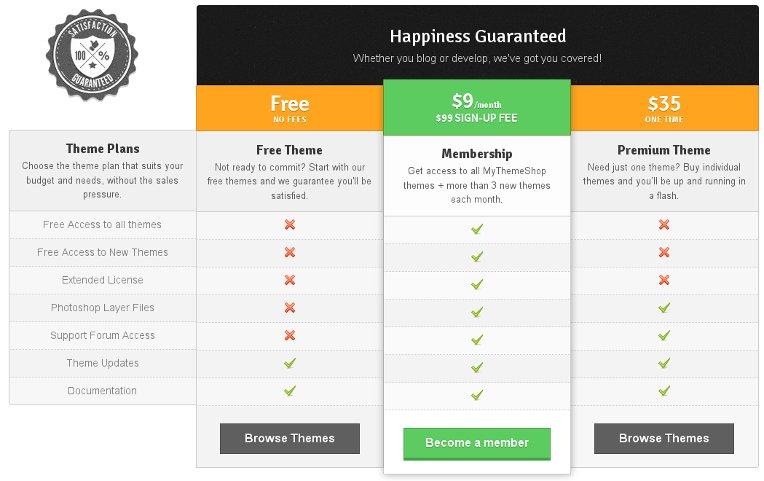Setting prices isn’t easy. But you know that already, and that’s why you’re here.
In an ideal world, pricing products would be as easy as adding your ideal profit margin to your production cost to create a selling price, but we don’t live in an ideal world.
If you manufacture something for a dollar and sell it for two, that won’t do you any good if each sale costs you five bucks in marketing costs.
Pricing services can be even more difficult, because while time is money, it’s never easy to estimate how long something will take. It becomes a question of, “How long is a piece of string?”

A piece of string. How long is it? (Source)
People tend to take pricing for granted until they’re responsible for setting prices. Suddenly, they need to understand pricing strategies and market positioning, especially if they want to maximize revenue and get the most bang for their buck.
And so with that in mind, let’s take a closer look at the concept of pricing in marketing and the most effective pricing methods we have available to us.
Action Point
Not all prices are created equally. Let me explain.
Put simply, the price of something is the amount of money that’s being charged for it. If you go to Starbucks and pay them $5.99 for a coffee, that coffee is priced at $5.99.
Oscar Wilde famously said that a cynic is “a man who knows the price of everything and the value of nothing”. This is an important reminder that price and value are two different things.
If you were dying of thirst in the Sahara Desert and someone offered to sell you a bottle of water for five bucks, you’d think that a price of $5 was great value. In other words, the product’s price would be below its perceived value.
Prices can be applied to both products and services, although service providers might also use words like “fee” and “fare”. In fact, when you define pricing, you also need to define the following:

Three different price points out in the wild. (Source)
Be warned, though, that just because you now know what these words mean, that’s not the case for everyone. For example, a customer might ask you, “How much does it cost?” Even though they’re using the word “cost”, they’re actually asking about the “price”. Context is key.
Action Point
There are a ton of pricing strategies out there. The option you decide to go with will depend upon a range of factors including your market research and the kind of product or service you’re selling.
Some of the most common pricing strategies include:
| Pricing Type | Definition | Example |
|---|---|---|
| Competitive Pricing | Basing pricing on the competition and where you fit into the marketplace. | Supermarkets (Price Match) |
| Cost-Plus Pricing | Relies on taking the per-unit production cost of a product and adding a fixed markup to it, often expressed in terms of a percentage. | Manufacturing, Print on Demand |
| Demand-Based Pricing | Also known as dynamic pricing, this is a form of pricing where prices are constantly adjusted based upon how much demand there is for the product or service. | Stock Market, Seasonal Products, Airlines, CPC Advertising |
| Economy Pricing | Using low pricing (especially when compared to competitors) to target mass markets or sell commodity products. | Aldi, Walmart, McDonald’s |
| Penetration Pricing | Deliberately using low prices to capture market share, especially during a new product launch. | Netflix, HelloFresh |
| Premium Pricing | Using high pricing (especially when compared to competitors) to establish a sense of luxury and exclusivity. | Apple, Porsche, Rolex |
| Price Skimming | Using high prices to begin with, then reducing those prices as additional competitors come into the marketplace or products are superseded by newer models. | Sony, Samsung, Nike |
| Value-Based Pricing | Basing prices on the customer’s perceived value of the product. An extreme example of this is when musicians allow fans to choose how much they want to pay to download their album. | Convenience Stores, Housing, Diamonds |
The pricing strategy that you go with will depend upon a variety of factors, ranging from your customers’ spending power to the pricing and products of the competition. We’ll take a closer look at some of these factors later in this article.
Action Point
When we talk about goods, we’re essentially talking about digital or physical products. Due to the nature of these products, we’re able to have a good idea of their production cost, and so they tend to naturally fit into models like cost-plus pricing and penetration pricing.
Pricing services is a little different, because delivering a service takes time — and time, as they say, is money.
Companies that provide services, such as law firms and marketing agencies, typically calculate a “per hour” rate for their employees which is based upon their salary and which acts as a breakeven price for an hour of their time.
This means they can use any of the pricing strategies that we’ve talked about, as long as they make sure that they’re pricing themselves above that breakeven point. Value-based pricing tends to work particularly well for service companies.

Value versus cost, as taught by Mimi and Eunice. (Source)
Action Point
As you price your product/service, it can help to think about your customer’s mindset.
Customers tap into a bunch of different factors when deciding how much they’re willing to spend — or, to put it differently, the price they’re prepared to pay.

Your customer’s mind. This is what you need to see inside. (Source)
Most people want to spend as little as possible, but they also recognize that “you get what you pay for”. That’s why high-end fashion brands and companies like Apple are able to adopt a premium pricing model.
Often, the price that people are willing to pay comes down to perceived value. This means that if you want people to pay more for your product, you need to increase the amount of value they believe they’re getting.
Value can be provided in a number of ways, from adding freebies (such as a free toy inside a cereal box) to guaranteeing exclusivity (e.g. only making a new product available to existing customers) or providing convenience (like when we order food to be delivered).
Thinking in terms of perceived value and putting yourself in your customers’ shoes will make it easier for you to figure out the price they’ll be willing to pay. But there’s plenty more for us to think about.
Action Point
The prices you choose can make the difference between whether you make a sale or whether the customer walks away or chooses to buy from a competitor. In other words, the consumer perspective of price has a direct influence on sales and, consequently, profit.
The good news is that it’s super easy for you to adjust your pricing, and you can continue to test it over time to make sure that you’re maximizing profit while still positively influencing purchasing decisions.
Other parts of the marketing mix (such as product and promotion) tend to seem more glamorous and get more attention, but knowing how to set a price can be more important than all of the other elements combined. Here’s why:
Unfortunately for us, we don’t have a crystal ball, and so it’s difficult for us to know in advance how changes to our pricing could affect the market. Studies have shown that even small variations in price can raise or lower revenue by up to 50%.
That’s why it’s important to work on your pricing strategy so that people are paying the highest amount possible without hurting your sales. That way, you’ll make more than the competition, especially given that most businesses spend less than ten hours per year thinking about pricing.
Action Point

A soldier experimenting with prices by shining a laser at them. (Source)
Before we say goodbye, let’s take a look at a few final tips on how price communicates value and how we can tap into the power of psychology to set the highest prices possible without losing customers. Here’s what you need to know:
Action Point
By now, you should have a good understanding of the role of prices in marketing, and if you’ve been following along with the action points, you’ll have a rough idea of what your price might be.
If in doubt, value-based pricing is a safe bet, because it ensures that your prices reflect the perceived value of what you’re selling. Cost-plus pricing can also work because it’s the easiest strategy to go with and ensures that your prices are above the breakeven point.
Ultimately, there’s no single answer for the strategy you should go with, as it depends on both your company and your customers. On top of that, there’s also plenty of room for you to experiment and to change your prices as time goes on until you figure out what works best.
Just remember that your pricing strategy needs to be determined by research and strategy, and just guessing is a great way to go out of business. You deserve better than that.
Action Point

Email subscription is available ONLY TODAY (oh, okay, and tomorrow).
Surely, we respect your inbox! Unsubscription works every day.

We’d love to tailor your experience — which of these best describes you?